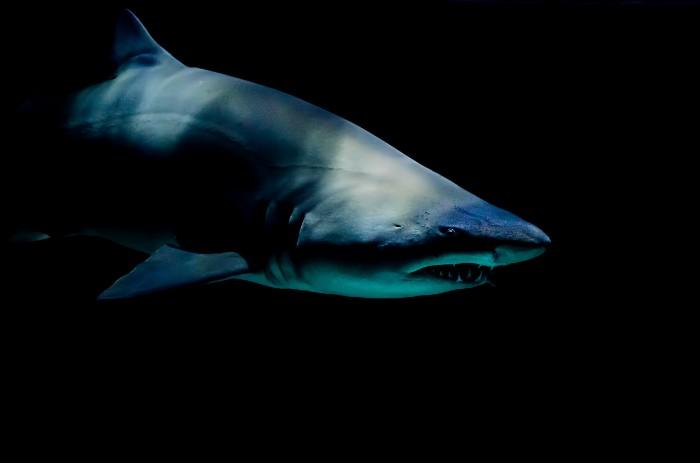How Big Was the Megalodon Really?

The Megalodon shark is one of the most fascinating creatures to have ever lived in our oceans. This giant shark lived between 23 and 3.6 million years ago and grew to lengths of up to 59 feet (18 meters), making it the largest shark species that has ever lived! How big were Megalodon sharks, really? Let’s take a look.
Megalodon Shark Size Estimates
For years, the size of the megalodon was debated by marine biologists. This is because the only evidence of the megalodon’s size comes from its fossil remains since it’s an extinct species. There is also a lot of variation in megalodon tooth size. Some scientists believe that the largest megalodon teeth come from adult sharks, while others believe that they come from juvenile megalodon sharks.
Scientists were also divided about the size and some believed that the megalodon was as large as 60 feet long, while others thought it was closer to 40 feet in length. However, the most recent body size estimates put the average size of this massive shark at around 59 feet (18 meters). This means that the Megalodon was significantly larger than even the great white shark (currently the largest known living species of shark), which only grows to an average length of 20 feet (6 meters).
Megalodon Shark Weight Estimates
In addition to its massive body length, the Megalodon also weighed a whopping 48 tons (43 metric tons), making it nearly twice as heavy as a Tyrannosaurus Rex! In fact, its weight was so great that it would have been impossible for this shark to swim if it were any larger. As it was, the Megalodon had to constantly keep swimming in order to keep itself afloat. Researchers believe that it was likely capable of swimming at speeds up to 25 miles (40 km) per hour for short bursts and could have maintained an absolute cruising speed of around 8-10 miles (13-16 km) per hour during longer journeys.
How did Megalodon get so big? One theory is that it fed on large marine mammals. This was made possible by it’s bite force that was estimated to be up to 108,514-182,201 newtons (10-18 metric tons), which is much greater than the bite of a modern great white shark. This tremendous bite force allowed megalodon jaws to easily crush and consume large prey items such as whales, sea cows, and other large marine megafaunal species.
Another possibility is that it simply had a slower growth rate than modern living sharks, meaning that it had more time to reach its full size. Studies of modern shark teeth have shown that they grow at a rate of about 1 cm per year. Based on this data, scientists believe that the megalodon reached its full size of around 15 meters in length after around 20 years.
However, it’s worth noting that this is just an estimate, and more research is needed to confirm the megalodon’s exact growth rate. Whatever the case may be, it’s clear that Megalodon was one of the biggest apex predators to ever roam the ocean.
As you can see, the Megalodon was an absolutely massive creature! It’s hard to even wrap our minds around how large this prehistoric shark truly was. Unfortunately, we’ll never know exactly how big the Megalodon was since there are no complete skeletons of this elusive shark. However, we can be sure that it was one of the largest—if not THE largest—apex predator that has ever lived!
